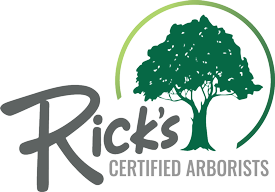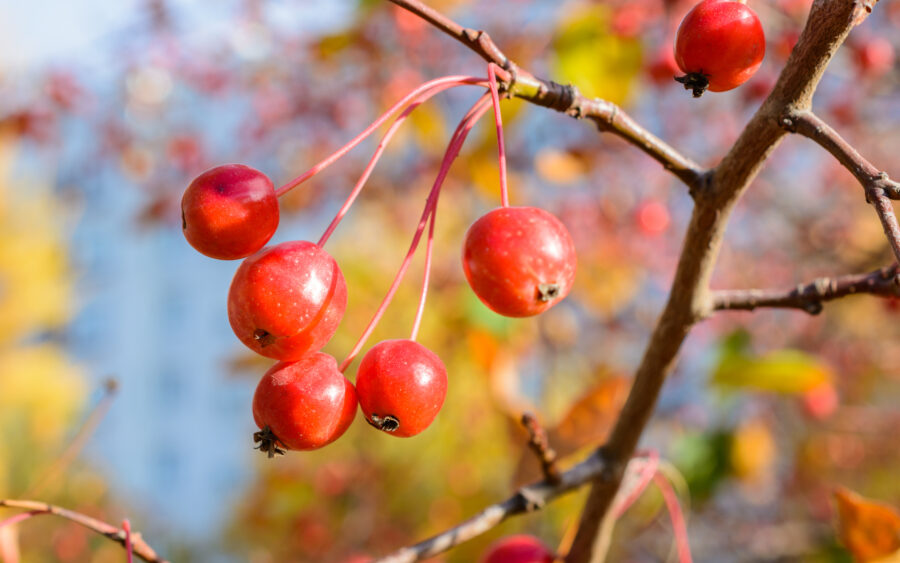Apple Scab is a destructive fungal disease that affects apples and crabapples. Growers can manage the disease by properly applying fungicides and practicing good sanitation. Planting resistant varieties may be the best way to combat Apple Scab.
Symptoms
The fungus Ventura inaequalis causes Apple Scab. The disease starts by infecting the leaves around blossom buds, making them twisted and dwarfed. The infection causes characteristic olive green or brown leaf spots and early leaf drop.
Trees may experience partial defoliation with a severe infection. While defoliation from Apple Scab does not usually pose a major danger, a normally healthy tree may be negatively affected.
When the infection progresses to the fruit, it causes distinctive olive-green spots with a rough texture. Infected fruits become misshapen. If fruits become heavily infected, they often drop prematurely.
Fruits affected by Apple Scab are edible but unattractive. For this reason, many home and commercial growers want to find a solution to this problem.
The Disease Cycle
The fungal spores stay on fallen leaves during the winter. When spring rain and winds arrive, they carry spores to the emerging apple leaves. Wet, cool spring weather is most conducive to infection.
More spores come about 10 to 20 days after the initial infection. These spores travel to the newest leaves. The infection cycle may continue as long as cool, damp weather persists. The disease usually stops spreading when dry, hot conditions prevail.
Management of Apple Scab
While there is no cure for Apple Scab, growers can take action to lessen its impact on their trees. One of the most important steps that growers can take is to clean up all infected leaf litter. Destroy these leaves as soon as possible.
Air circulation helps leaves dry and makes it harder for the infection to spread. Prune trees to improve air circulation.
Water trees well during dry spells. Healthy trees can withstand the defoliating effects of Apple Scab.
Apple Scab Treatment
Fungicidal sprays can help to control the disease before the spores spread in the spring. However, sprays do not work on an established infection. If you have noticed past symptoms on one of your trees, spray the younger and uninfected leaves to prevent the disease’s spread. Continue preventive spraying throughout the season.
Resistant Varieties
The best way to reduce your trees’ chances of Apple Scab infection is to plant resistant varieties. These varieties include Liberty, Jonafree, and Novamac, among many others. Homeowners can purchase resistant crabapple varieties as well.
Fighting Back Against Apple Scab
While Apple Scab is not curable, you can manage it with careful attention to symptoms and growing conditions. Make sure to practice excellent hygiene around your trees, cleaning up and destroying all fallen leaves. Apply fungicidal sprays in late winter or early spring before the disease can infect leaves and fruit.
Contact the Certified Arborists at Rick’s Plant Health Care to combat Apple Scab and other tree diseases. We can help you manage and treat conditions that interfere with enjoying your trees.


Comments are closed.